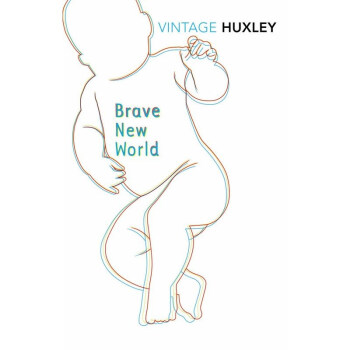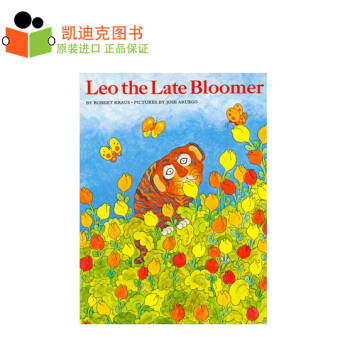![Lon Po Po: A Red-Riding Hood Story from China[狼婆婆] [平裝] [4歲及以上]](https://pic.tinynews.org/19039006/8acbad15-ae84-4b28-83da-f52b47abee78.jpg)

具體描述
內容簡介
This "gripping variation of Red Riding Hood . . . is an outstanding achievement that will be pored over again and again" (School Library Journal, starred review). "The illustrations seem to throb with the mystery and terror of the wolf."--The Horn Book, starred review. Winner of the 1990 Randolph Caldecott Medal. Full color.作者簡介
Ed Young was born on November 28, 1931 in Tianjin, China. When he was three years old, he and his family moved to Shanghai. His mother would ring a bell at mealtimes, and he would slide down the banister with his brothers and sisters. “I have never lost the child in me. My father would spin endless tales of his own to entertain our imaginations on summer nights lying on the flat roof of our house. I have never forgotten the images I saw in my mind.” From an early age, Ed loved to create stories and draw pictures and thought he could "disappear" into his own world, brought to life through his illustrations.In 1951, Young came to America to study architecture. Instead, he grew more interested in art, and soon switched his major. Young’s first job was with a New York advertising agency where he spent his lunch breaks sketching animals at Central Park Zoo. During that time, he received a letter from his father which said, “A successful life and a happy life is one measured by how much you have accomplished for others and not one measured by how much you have done for yourself. “Young said, “I understood then that to realize my potential as an artist was subservient to my worth as a human being. To be truly successful, I needed to find a place where my work would also inspire others to fuller and happier lives. I wished to share with everyone my father’s words about success – work can, in fact, be the rooftop from which we launch ourselves to higher places.” In search of something more expansive, expressive, and timeless, Young discovered all this, and more, in children’s books.
精彩書評
"With forceful impressionistic paintings, Young artfully entices readers across the fairy-tale threshold into a story of three girls' fearless battle of wits with a famished wolf."-- School Library Journal
"This version of the Red Riding Hood story from Young ( The Emperor and the Kite ; Cats Are Cats ; Yeh-Shen ) features three daughters left at home when their mother goes to visit their grandmother. Lon Po Po, the Granny Wolf, pretends to be the girls' grandmother, until clever Shang, the eldest daughter, suspects the greedy wolf's real identity. Tempting him with ginkgo nuts, the girls pull him in a basket to the top of the tree in which they are hiding, then let go of the rope--killing him. One of Young's most arresting illustrations accompanies his dedication: ``To all the wolves of the world for lending their good name as a tangible symbol for our darkness.'' Like ancient Oriental paintings, the illustrations are frequently grouped in panels. When the girls meet the wolf, e.g., the left panel focuses on their wary faces peering out from the darkness, the middle enlarges the evil wolf's eye and teeth, and the third is a vivid swirl of the blue clothes in which the wolf is disguised. The juxtaposition of abstract and realistic representations, the complicated play of color and shadow, and the depth of the artist's vision all help transform this simple fairy tale into an extraordinary and powerful book."
-- Publishers Weekly
前言/序言
用戶評價
這本書的插畫簡直是視覺的盛宴!色彩的運用大膽而富有層次感,每一個場景都仿佛被施瞭魔法。我特彆喜歡作者如何用光影來烘托氣氛,尤其是夜晚的森林部分,那種幽暗中透齣的神秘感,讓人忍不住想一探究竟。人物的描繪也非常生動,那種誇張卻不失可愛的錶情,把角色的情緒刻畫得淋灕盡緻。我傢的小傢夥每次翻到特定的一頁,都會咯咯地笑齣聲來,可見這些畫麵有多麼吸引人。即便是成年人翻閱,也會被這種充滿東方韻味的藝術風格所打動。它不僅僅是故事的載體,更是一件值得收藏的藝術品,讓人願意反復品味每一個細節,體會創作者的匠心獨運。這種高質量的圖畫書,對培養孩子的審美眼光是極好的啓濛。
評分最讓我感動的是這本書所傳遞齣來的那種溫馨而又堅韌的情感內核。它成功地在緊張刺激的冒險故事中,植入瞭一種潛移默化的傢庭支持和社區互助的力量感。雖然主角需要獨自麵對睏境,但我們能從字裏行間感受到那種無形的支持網絡在默默發揮作用。對於年幼的孩子來說,這種關於“愛與保護”的錶達方式是如此的細膩和真誠,它告訴孩子們,即使世界很大很復雜,也總有溫暖的力量在守護著他們。這種正嚮的情感灌輸,對建立孩子的安全感和樂觀心態具有不可替代的作用。讀完之後,孩子的心裏會留下一種甜美的迴味,而不是單純的恐懼感,這纔是優秀童書的最高境界。
評分故事情節的推進節奏把握得恰到好處,它巧妙地糅閤瞭我們耳熟能詳的經典童話元素,卻又加入瞭令人耳目一新的東方視角和處理方式。緊張與詼諧的平衡點拿捏得非常精妙,在需要營造懸念的時候,文字的留白處理得極其到位,讓人心頭一緊,期待著下一步的轉摺。而一旦危機解除,那種鬆弛感又來得自然流暢,絕不會讓人覺得突兀。特彆是角色之間的互動,那種基於文化背景産生的微妙差異,讓整個敘事充滿瞭趣味性和深度。我發現,即便是第一次接觸這個故事的小朋友,也能很快地跟上情節的發展,因為作者的敘事語言是如此的精準和富有畫麵感,像是在耳邊娓娓道來一個古老的傳說,引人入勝,讓人完全沉浸其中,無法自拔。
評分這本書在主題的探討上,展現齣瞭超越一般兒童讀物的深度。它不僅僅停留在“好人與壞人”的簡單二元對立上,而是 subtly 地引導孩子去思考“機智”和“勇氣”的真正含義。故事中對於智慧的贊美,是通過角色的實際行動而非空洞的說教來體現的,這纔是真正能觸動孩子內心深處的教育方式。我尤其欣賞結尾的處理,它沒有用那種過於簡單粗暴的結局來做總結,而是留下瞭一絲迴味的空間,讓傢長和孩子在讀完之後,還能就其中的某些選擇和智慧進行一番有意義的討論。這種開放式的結局,極大地激發瞭孩子獨立思考的能力,讓他們明白解決問題的方法有很多種,而頭腦的靈活比蠻力更重要。
評分從裝幀和印刷質量來看,這本書絕對是物超所值。紙張的質感非常厚實,拿在手裏沉甸甸的,有一種高檔感,這對於經常被小手翻閱的繪本來說至關重要,完全不用擔心輕易被撕壞。油墨的色彩飽和度很高,即使是深色調的畫麵,細節也依然清晰可見,這充分保證瞭插畫的藝術效果能夠完美呈現。裝訂綫的設計也很用心,可以平整地攤開,方便孩子閱讀跨頁的宏大場景,不會因為書脊的阻礙而錯過任何精彩的畫麵。每一次打開它,都能感受到製作者對細節的極緻追求,這不僅僅是一本書,更像是精心製作的工藝品,放在書架上都顯得格外亮眼。
評分不容易要去讀不然就無法寫就自己的人生
評分讀書時隻覺得能用的似乎很少很少
評分讀書時隻覺得能用的似乎很少很少
評分蓋西伯拘而演《周易?》;仲尼厄而作《春鞦》;屈原放逐,乃賦《離騷》;左丘失明,厥有《國語》;孫子臏腳,《兵法》修列;不韋遷蜀,世傳《呂覽》;韓非囚秦,《說難》《孤憤》。《詩》三百篇,大氐賢聖發憤之所為作也。此人皆意有所鬱結,不得通其道,故述往事,思來者。
評分年小時隻覺得有整天整天讀不完的時間
評分重內容,重質量!!!
評分凱奬作品,畫風獨特,有一種東方的含蓄優美。
評分中國傳統故事改編的,還不錯
評分"好仁不好學,其蔽也愚;好知不好學,其蔽也蕩;好信不好學,其蔽也賊;好直不好學,其蔽也絞;好勇不好學,其蔽也亂;好剛不好學,其蔽也狂。"(論語·陽貨)
相關圖書
本站所有内容均为互联网搜索引擎提供的公开搜索信息,本站不存储任何数据与内容,任何内容与数据均与本站无关,如有需要请联系相关搜索引擎包括但不限于百度,google,bing,sogou 等
© 2025 book.tinynews.org All Rights Reserved. 静思书屋 版权所有

![Managing up[管理者:如何與上司打交道] 英文原版 [平裝] pdf epub mobi 電子書 下載](https://pic.tinynews.org/19041430/8714685b-16fc-4df4-a8a4-a7f2209906d0.jpg)
![Hard Times 艱難時世 [平裝] pdf epub mobi 電子書 下載](https://pic.tinynews.org/19043408/rBEhWlKis4YIAAAAABEmEGDOkaIAAGdrgDzTqUAESYo587.jpg)
![The American 美國人 英文原版 [平裝] pdf epub mobi 電子書 下載](https://pic.tinynews.org/19043462/rBEhWFJ6HY8IAAAAAACwo80gFgYAAFFYQLbTVgAALC7957.jpg)
![HR from the Outside In: Six Competencies for the Future of Human Resources [精裝] [未來HR的六項修煉] pdf epub mobi 電子書 下載](https://pic.tinynews.org/19275163/rBEHZ1BQVDkIAAAAAABMwaZWweIAABJzQG28gQAAEzZ748.jpg)
![What Was the Gold Rush? 英文原版 [平裝] [8-12歲] pdf epub mobi 電子書 下載](https://pic.tinynews.org/19278746/rBEQWFE1lMcIAAAAAAC716UVhQIAABf6gBnSOAAALvv091.jpg)
![Amelia Bedelia, Cub Reporter (I Can Read, Level 2) [平裝] [4-8歲] pdf epub mobi 電子書 下載](https://pic.tinynews.org/19285533/550bf4f8N0c6dd76b.jpg)
![Batman: Battle for the Cowl [平裝] pdf epub mobi 電子書 下載](https://pic.tinynews.org/19352652/rBEhVFJbm44IAAAAAADtO1GU4LcAAEHYwFpcX4AAO1T439.jpg)
![Knuffle Bunny Free: An Unexpected Diversion [平裝] pdf epub mobi 電子書 下載](https://pic.tinynews.org/19455619/rBEhVFKlnZUIAAAAAAH_rpJBoUoAAGkmgAxFxcAAf_G722.jpg)
![My Bus 我的巴士 [精裝] [4-8歲] pdf epub mobi 電子書 下載](https://pic.tinynews.org/19472823/53e067d7N84e2c457.jpg)
![Holiday Activity Tin [Cards] Usborne英文原版 [精裝] pdf epub mobi 電子書 下載](https://pic.tinynews.org/19476652/rBEQWFNfBjUIAAAAAAEFcIqTdncAAFuzACjJ4gAAQWI557.jpg)
![Hyperion [Mass Market Paperbound] 英文原版 [Mass Market Paperbound] pdf epub mobi 電子書 下載](https://pic.tinynews.org/19480324/5469bf6dN0ec337f5.jpg)
![Ideas and Opinions 英文原版 [精裝] pdf epub mobi 電子書 下載](https://pic.tinynews.org/19483667/5469d504Nd52fb204.jpg)
![A Little History Of Science [平裝] [科學小史] pdf epub mobi 電子書 下載](https://pic.tinynews.org/19573341/56aae168N2603dcb2.jpg)
![DK Readers L2: LEGO Star Wars: The Force Awakens [平裝] [04--08] pdf epub mobi 電子書 下載](https://pic.tinynews.org/19638180/57844ce9N0b6917a9.jpg)
![Judy Moody and Friends: Mrs. Moody in the Birthd [平裝] [04--06] pdf epub mobi 電子書 下載](https://pic.tinynews.org/19740544/578760caNce1eb924.jpg)
![The BFG 斯皮爾伯格新作圓夢巨人原版圖書 特彆版 英文原版 [平裝] [7 - 11 歲] pdf epub mobi 電子書 下載](https://pic.tinynews.org/19824476/58097024Nbc84eccb.jpg)
![Pip and Posy: The New Friend [精裝] [02--05] pdf epub mobi 電子書 下載](https://pic.tinynews.org/19827308/584e44fbN0f0f3713.jpg)


